Wheel Size: 29’’ (Size M–XL) or 29’’ front / 27.5’’ rear (Size S)
Travel: 153 mm rear / 160 mm front
Geometry Highlights:
- Sizes Offered: S, M, L, XL
- Headtube Angle: 64.5°
- Reach: 480 mm
- Chainstay Length: 435 mm
Frame Material: Aluminum and carbon fiber versions available
Price: Complete bikes starting at $2,499
Wheel Size: 29” (Size M–XL) or 29’’ front / 27.5’’ rear (Size S)
Travel: 134 mm rear / 140 mm front
Geometry Highlights:
- Sizes Offered: S, M, L, XL
- Headtube Angle: 65.5°
- Reach: 480 mm
- Chainstay Length: 435 mm
Frame Material: Aluminum and carbon fiber versions available
Price: Complete bikes starting at $1,899
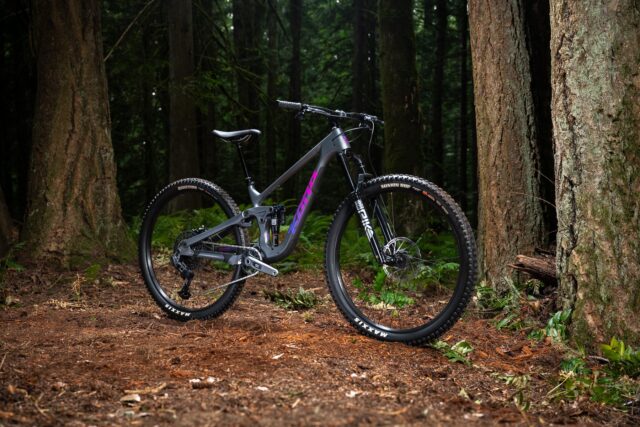
Intro
It’s probably fair to say that most longtime riders have a soft spot for Kona Bikes. From the iconic Kona Stinky’s role in the early days of Freeride to the original Process lineup’s paradigm-shifting approach to geometry design, Kona has made its mark on mountain biking in a way that few other brands have. It’s perhaps unsurprising then that we felt some level of grief in writing our RIP, Kona piece just a few short months ago as the brand’s prior owner decided to shutter the brand — only to then have the pleasure of writing a phoenix-from-the-ashes story about Kona’s reacquisition by its original founders.
Moving past that tumultuous time, Kona is updating its Trail and Enduro bikes, the Process 134 and 153. Rather than a total reinvention, Kona has made some sensible geometry updates and other refinements to fit and finish while keeping some of the hallmark traits of the longstanding Process series. Dig into the details of these updated Enduro and Trail rigs with us below.
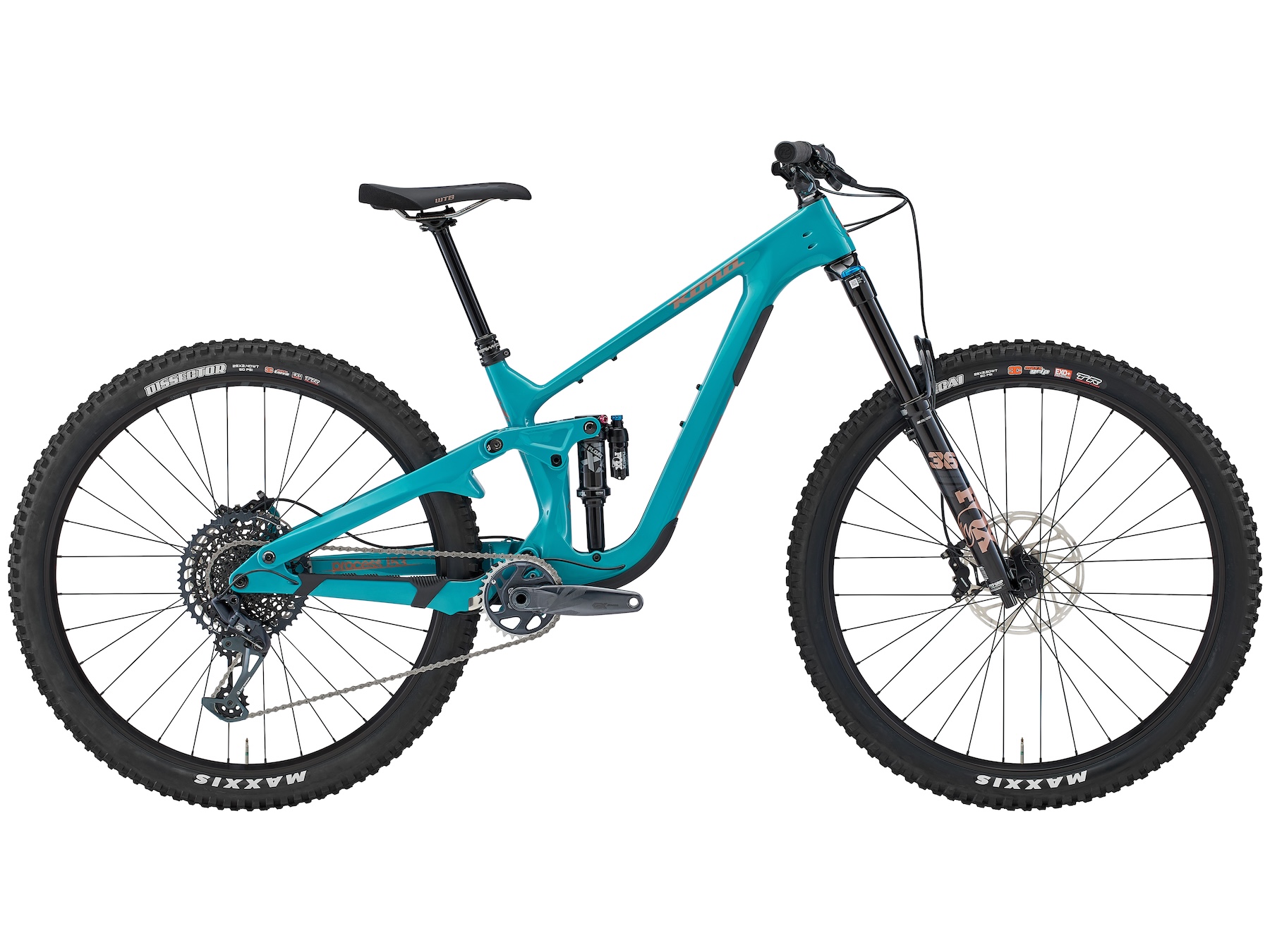
The Frames
Process 153
While there are some aesthetic differences from the prior version, the Process 153 remains unmistakably a Kona. The real differences start to pop up when you look into more of the details — Kona has found a lot to refine. The updated Process 153 gets a UDH hanger, an accessory mount under the top tube, and ISCG tabs. The frame also uses a flip chip at the seatstay to allow for mixed-wheel compatibility. The flip chip fully preserves the geometry between 29” and mixed wheel settings, though the leverage rate does shift slightly (more on that shortly). Otherwise, Kona has improved dropper post insertion while also making the seat tube shorter, and there’s now a size Small frame option where the prior version started at Medium. All frames get improved rubber protection details, and all models share the same hardware for ease of replacement if needed. Unfortunately for home mechanics, the bottom bracket is still press fit.
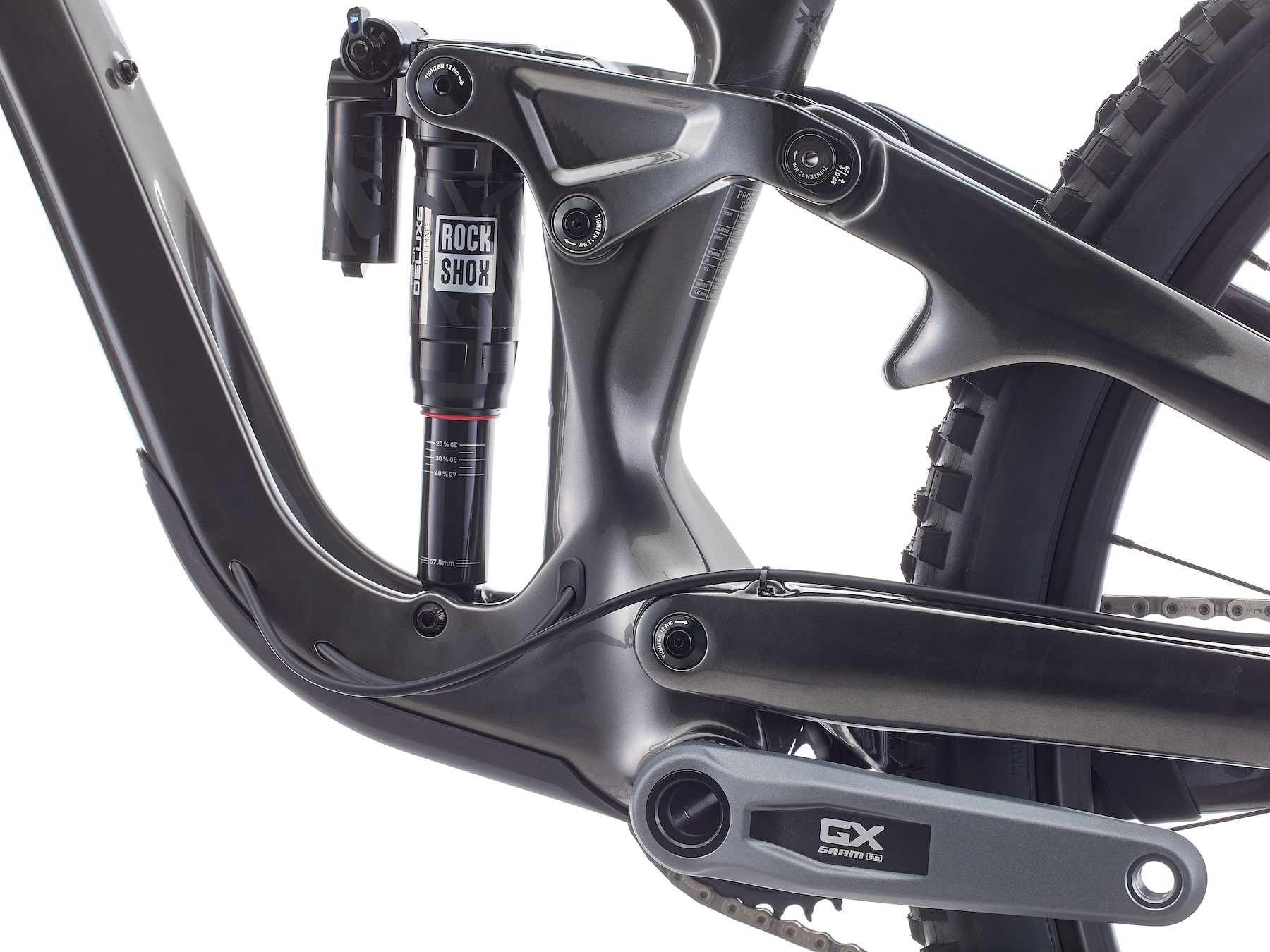
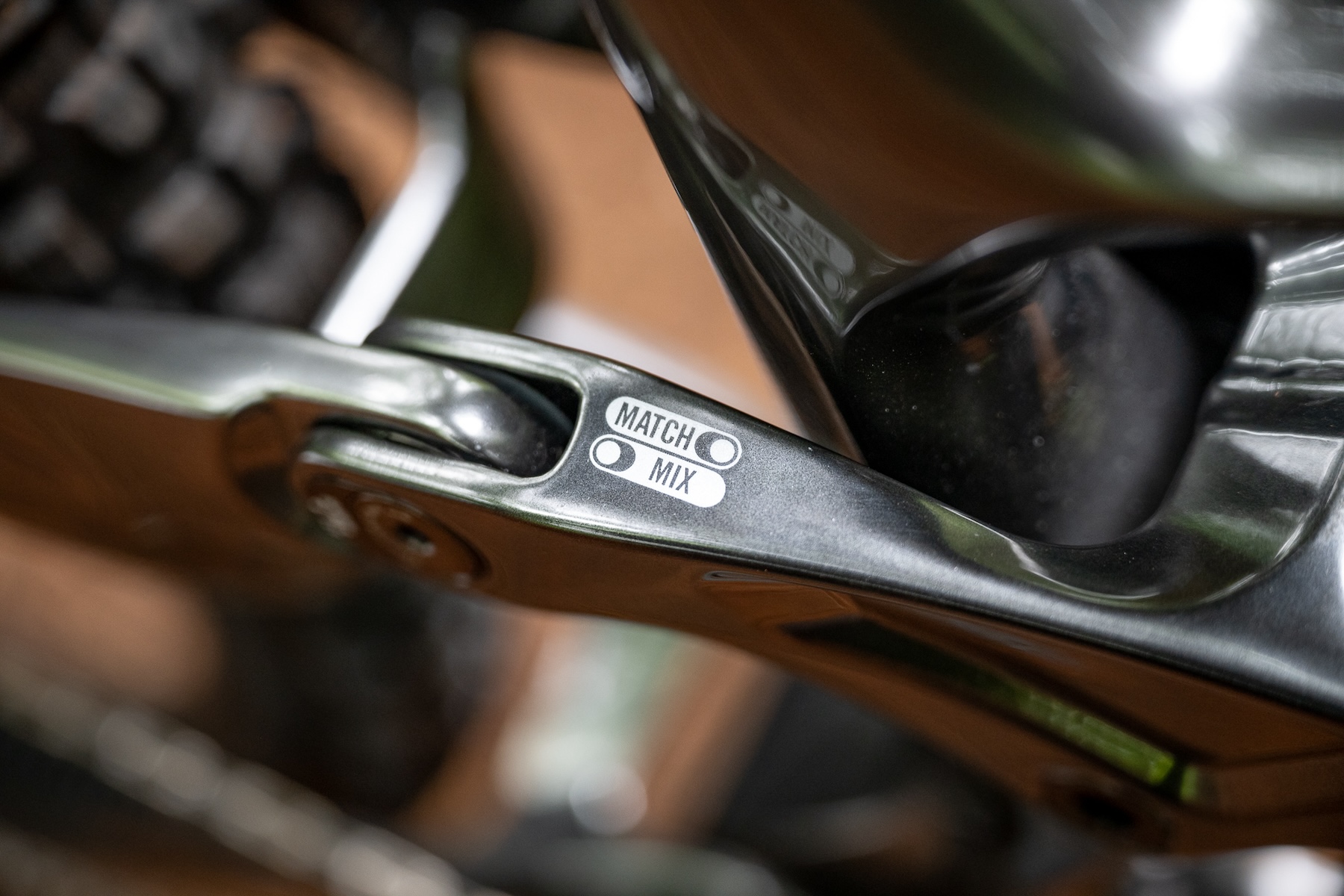
The intuitively named Process 153 gets — you guessed it — 153 mm of travel delivered via Kona’s familiar linkage-driven single pivot layout and vertically mounted shock. Kona says that the suspension kinematics suit both air and coil shocks and have been updated to give better small bump performance and balanced progression. Looking at the leverage curve, Kona has achieved a fairly linearly progressive characteristic, starting at just over 2.8 and ending at just under 2.4 in 29” mode. The leverage curve increases slightly in the mixed wheel setting, and the chart also implies that this slightly bumps suspension travel as a result, if only by a few millimeters. A similar curve shape likely requires a slight increase in spring rate or shock pressure versus any major setup changes. Anti-squat is fairly middle of the road, sitting at roughly 105–110% at sag depending on which rear cog is being used.
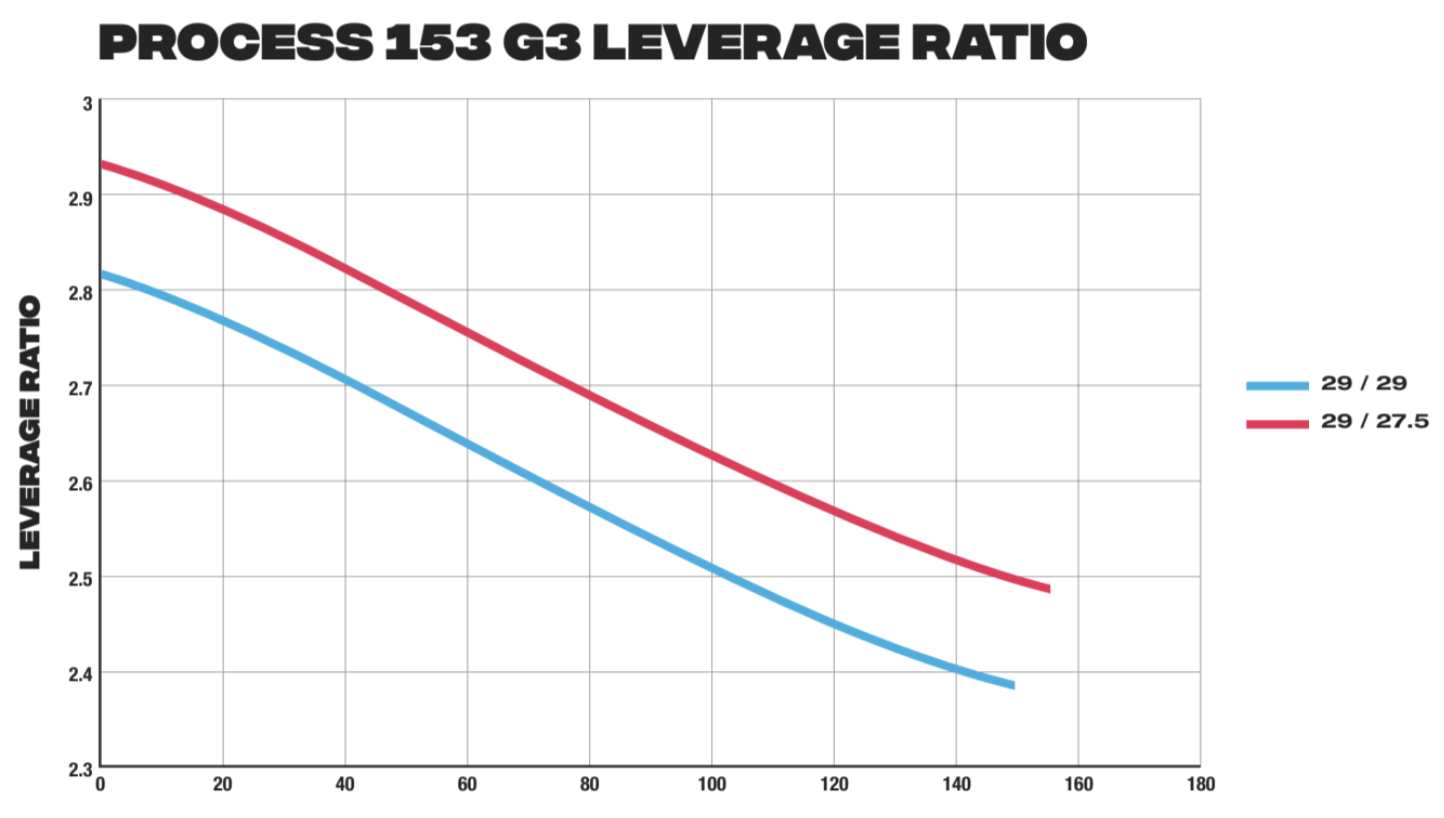

Like the prior generation, the Process 153 retains the choice of two frame materials, carbon fiber and aluminum, with the carbon version coming with some fancier build options (more on that below).
Despite being mostly the same in terms of geometry and suspension kinematics, the carbon and aluminum frames do have a couple of differences in the finer details. The first is the guided internal routing on the carbon model, with a unique Y connector allowing for standard (rear brake on the right) or moto-style (rear brake on the left) setups, versus external routing on the aluminum model aside from the dropper post and where the derailleur housing passes through the chainstay. The second is the chainline — the Process 153 CR gets a 55 mm chainline to play nice with the SRAM T-Type groups, whereas the 153 in aluminum gets a 52 mm chainline suited to typical Boost, non-T-Type drivetrains.
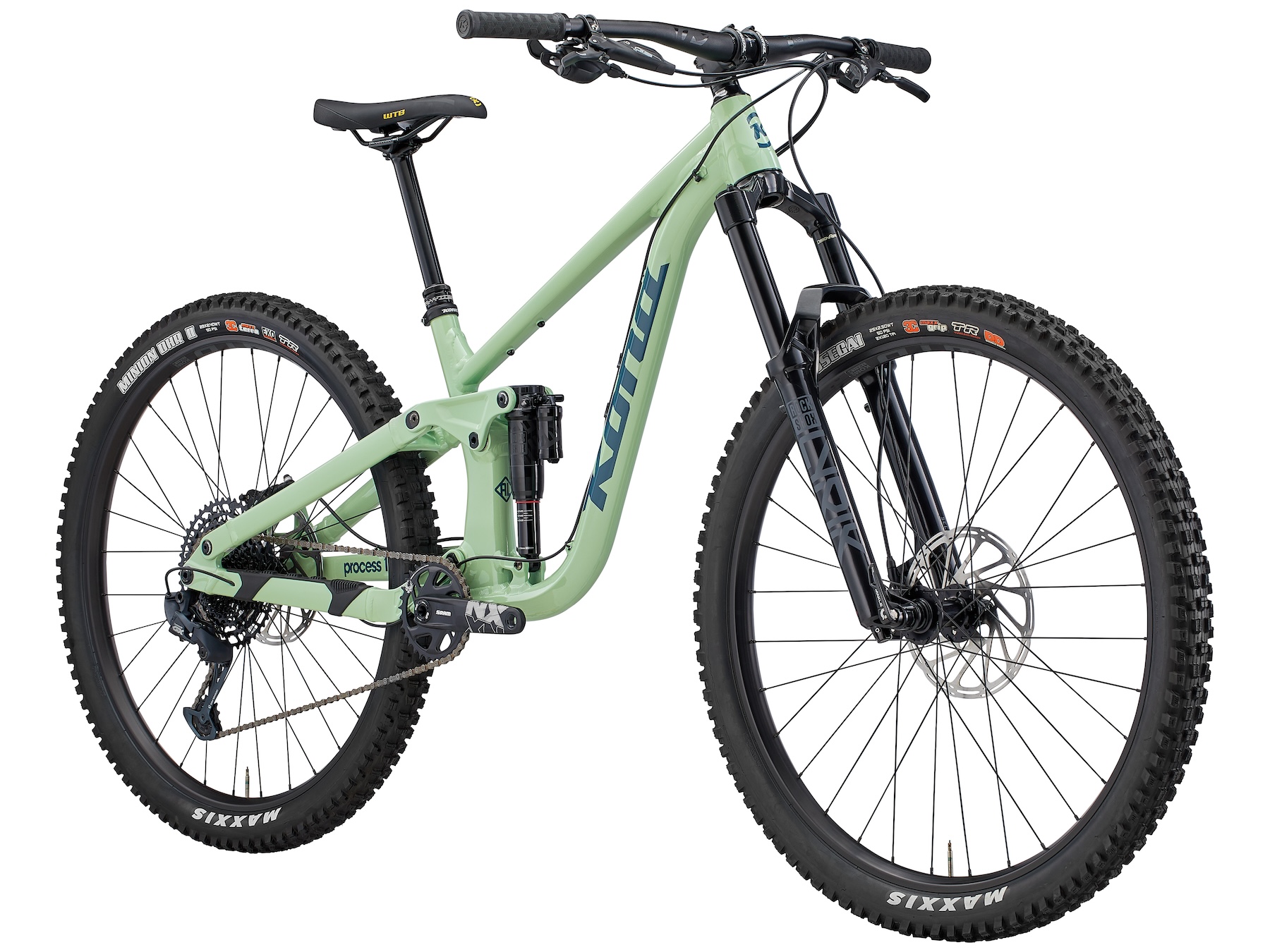
Process 134
The Process 134 gets all of the same frame construction and feature enhancements of the Process 153, so we won’t get into too much detail — if you scrolled past the 153 details to check out the 134, go ahead and check the preceding section for all of the major updates.
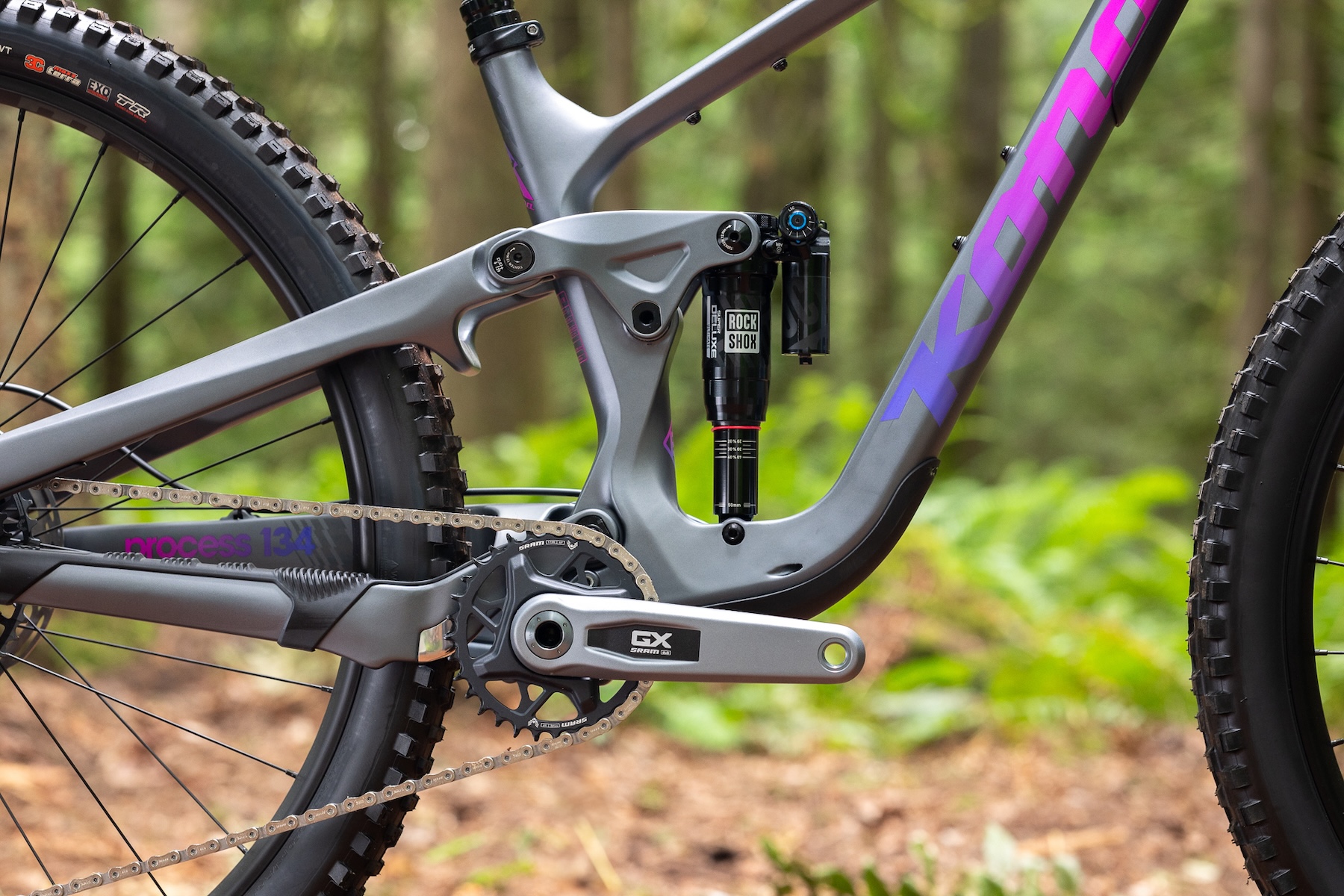
Where the 134 does differ is in its rear travel, which is, predictably, 134 mm. Like the 153, Kona says the Process 134 is suitable for both coil and air shocks, with a similarly linear-progressive leverage curve that gets slightly higher leverage and a corresponding small bump in travel when using the mixed wheel setting. Anti-squat is also about the same as with the 153, sitting around 105–110% at sag depending on the rear cog being used.

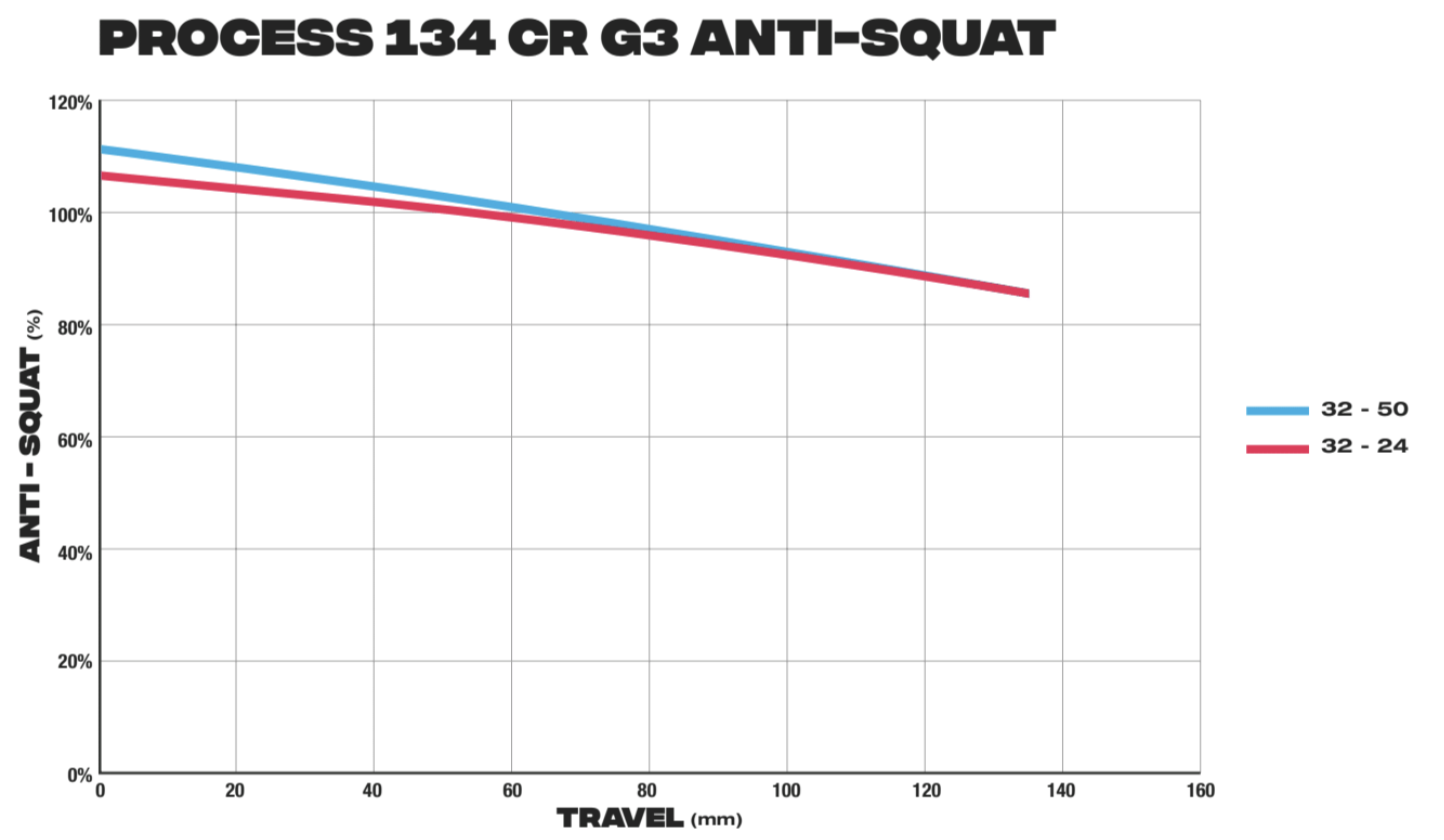
Fit & Geometry
Process 153
The Process 153 has long occupied an interesting middle ground between the more Trail-oriented 134 and the aggressively Enduro-focused Process X. While the new Process 153 has been updated slightly in the geometry department, Kona has resisted the urge to push things too far in any one direction in the name of keeping some of that hallmark versatility.
Using the Large as our reference point, the Process 153 gets a 480 mm reach, 64.5° head angle, and not-super-high 625 mm stack. Long known for using shorter chainstays in the name of a more nimble handling characteristic, Kona sticks with fairly short 435 mm chainstays across the size range. A 76.7° effective seat tube angle is slacker than some other Enduro bikes, but should afford a more comfortable pedaling position on flatter trails where a super steep seat tube can feel a bit too forward-biased.
Seat tube lengths are notably short across the board, with the Large getting a 420 mm seat tube. That should allow for running a lengthy dropper post, especially considering Kona’s focus on improving dropper insertion depth as well.
Full geometry figures are included in the chart below:
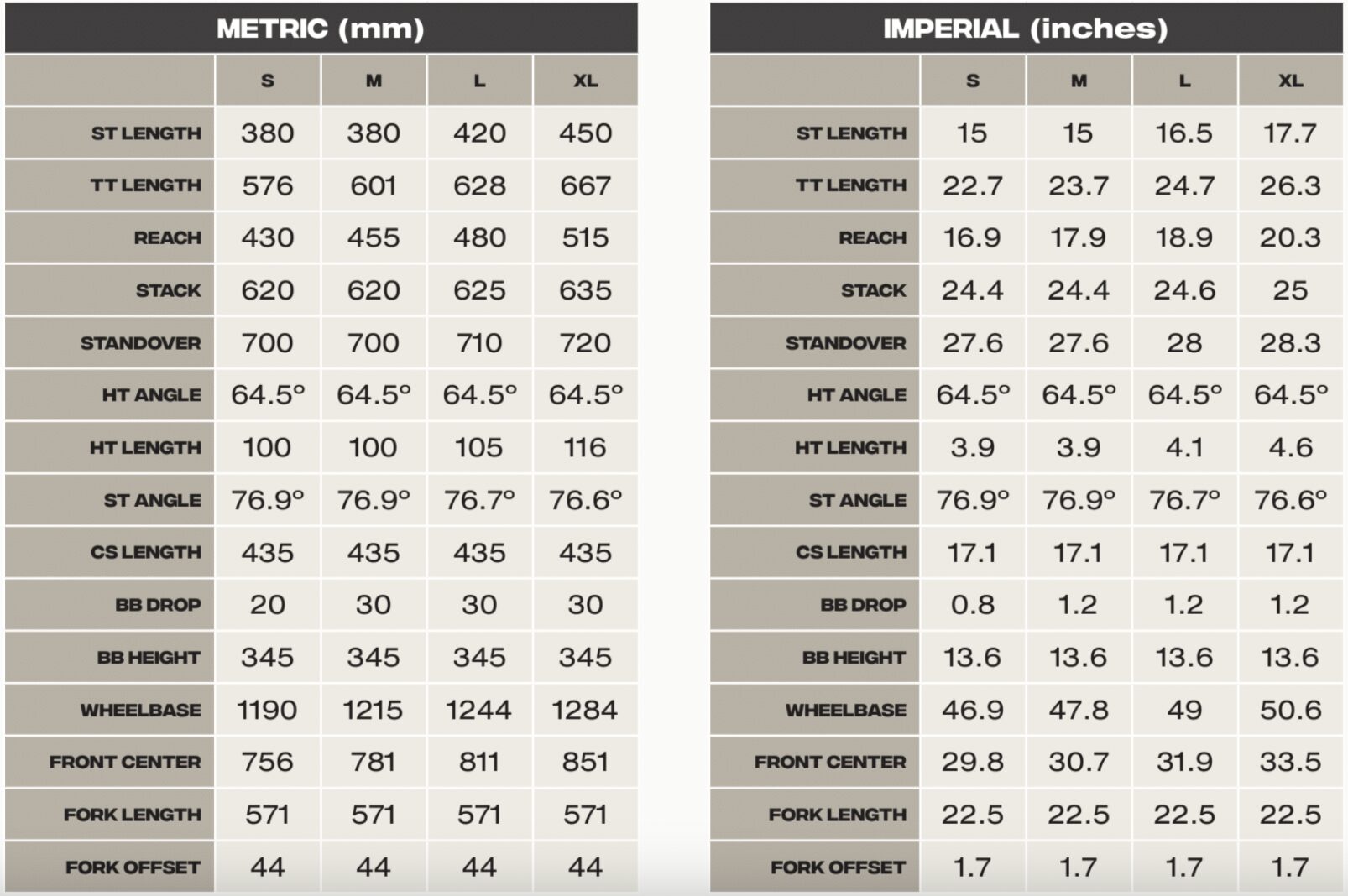
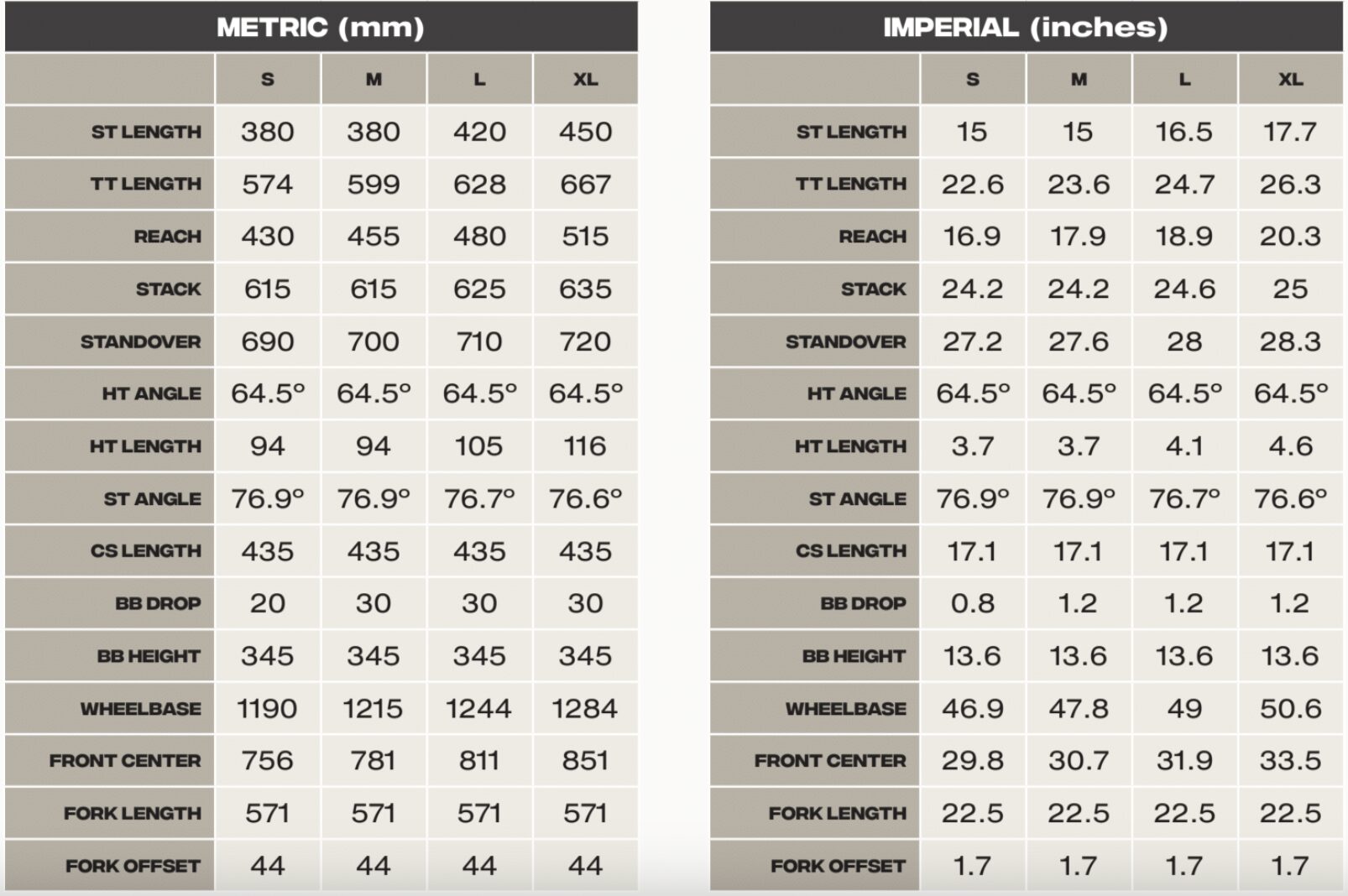
Process 134
The Process 134 shares a lot of similar geometry traits with its bigger sibling. Like the 153, the Process 134 gets a 480 mm reach in size Large, along with the same 435 mm chainstays across sizes. Stack is also the same as the 153 at 625 mm in size Large, as are the 420 mm seat tube length and 76.7° seat tube angle. In fact, the only real notable deviation is the 1° steeper head tube angle at 65.5° — a sensible choice that should deliver slightly sharper handling on what is ultimately a more Trail-oriented bike.
Full geometry figures are included in the chart below:
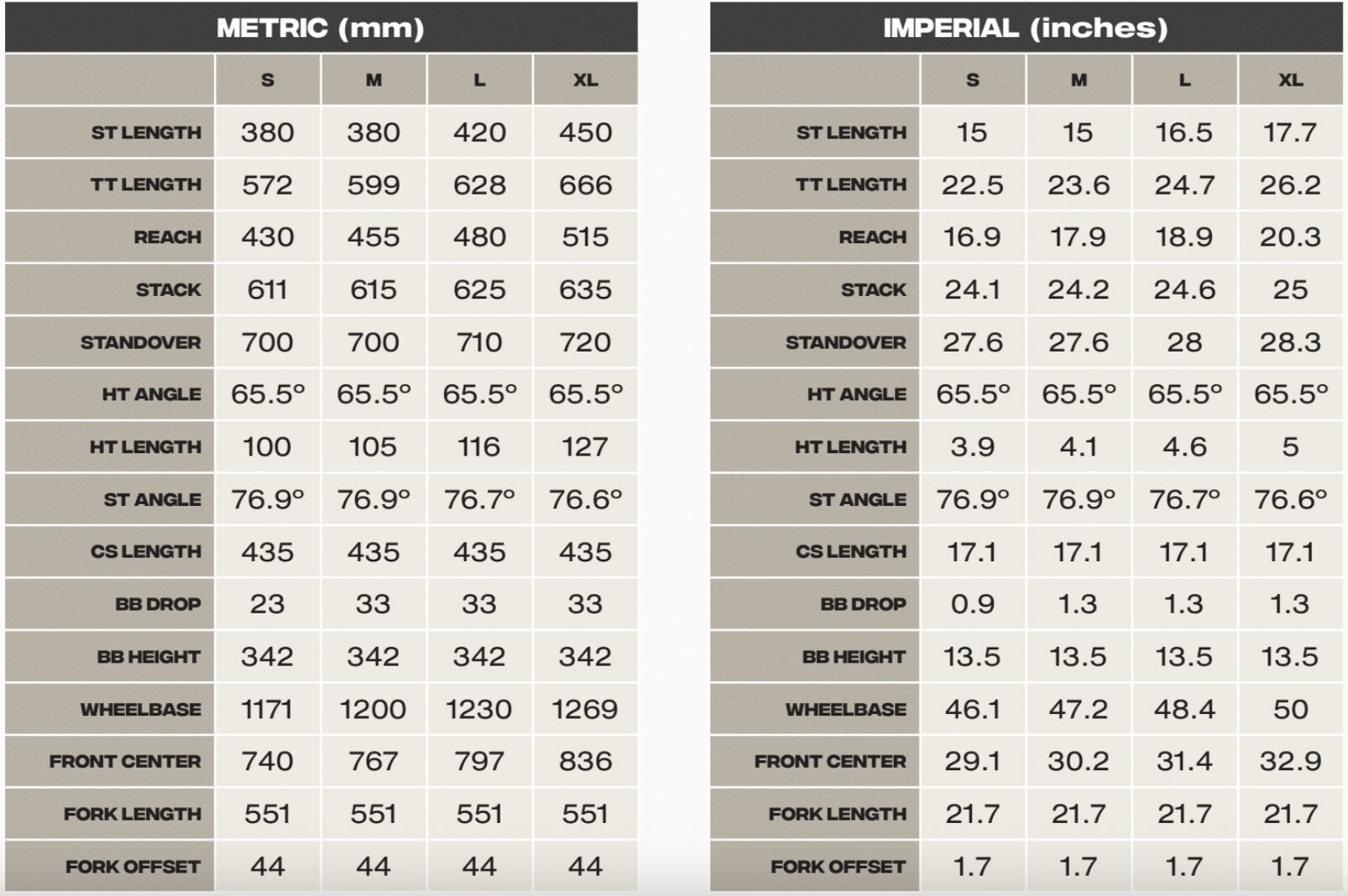
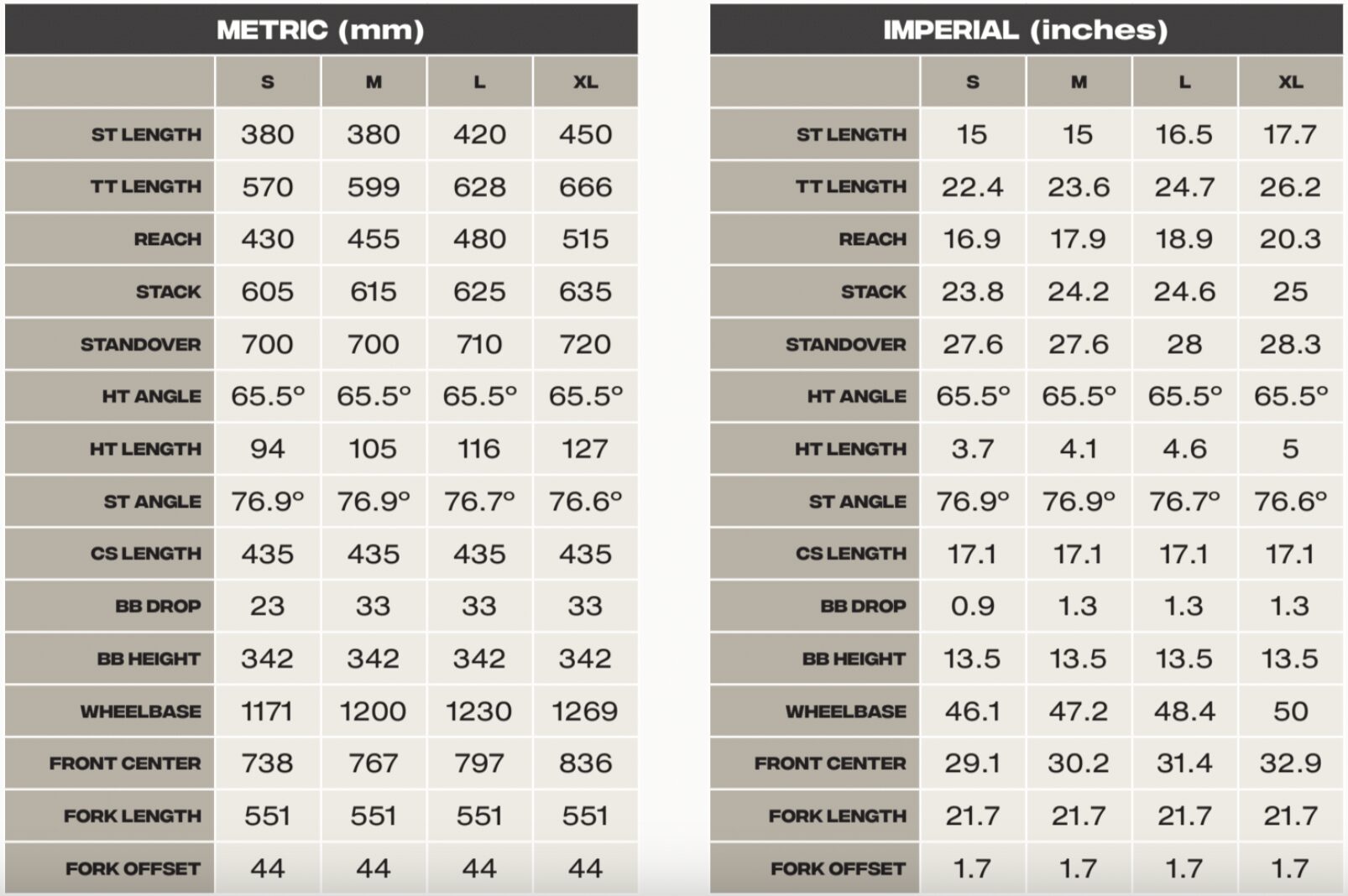
The Builds
Process 153
The Process 153’s focus on versatility continues in its build spec, which walks a line between Trail and Enduro intentions. The two carbon models get higher spec components, with the 153 CR DL getting RockShox Ultimate-level suspension in the Lyrik and Super Deluxe while the 153 CR gets a Fox 36 Performance fork and Float X Performance Elite shock. The aluminum models are full RockShox affairs, with the 153 DL getting a Lyrik Select fork and Super Deluxe Select+ shock, while the base model 153 gets a Yari RC fork and Deluxe Select+ shock. Drivetrains are all provided by SRAM, with the 153 CR DL getting GX Transmission while the others get mechanical drivetrains.
The newly added size Small comes stock with a mixed wheel setup, while all other sizes ship with 29” wheels. The dropper post length is impressive, with the Large and XL sizes getting 200 mm of drop and the Small and Medium getting 175 mm. That might be the longest travel dropper spec we’ve ever seen on a size Small bike and could be quite compelling for some folks.
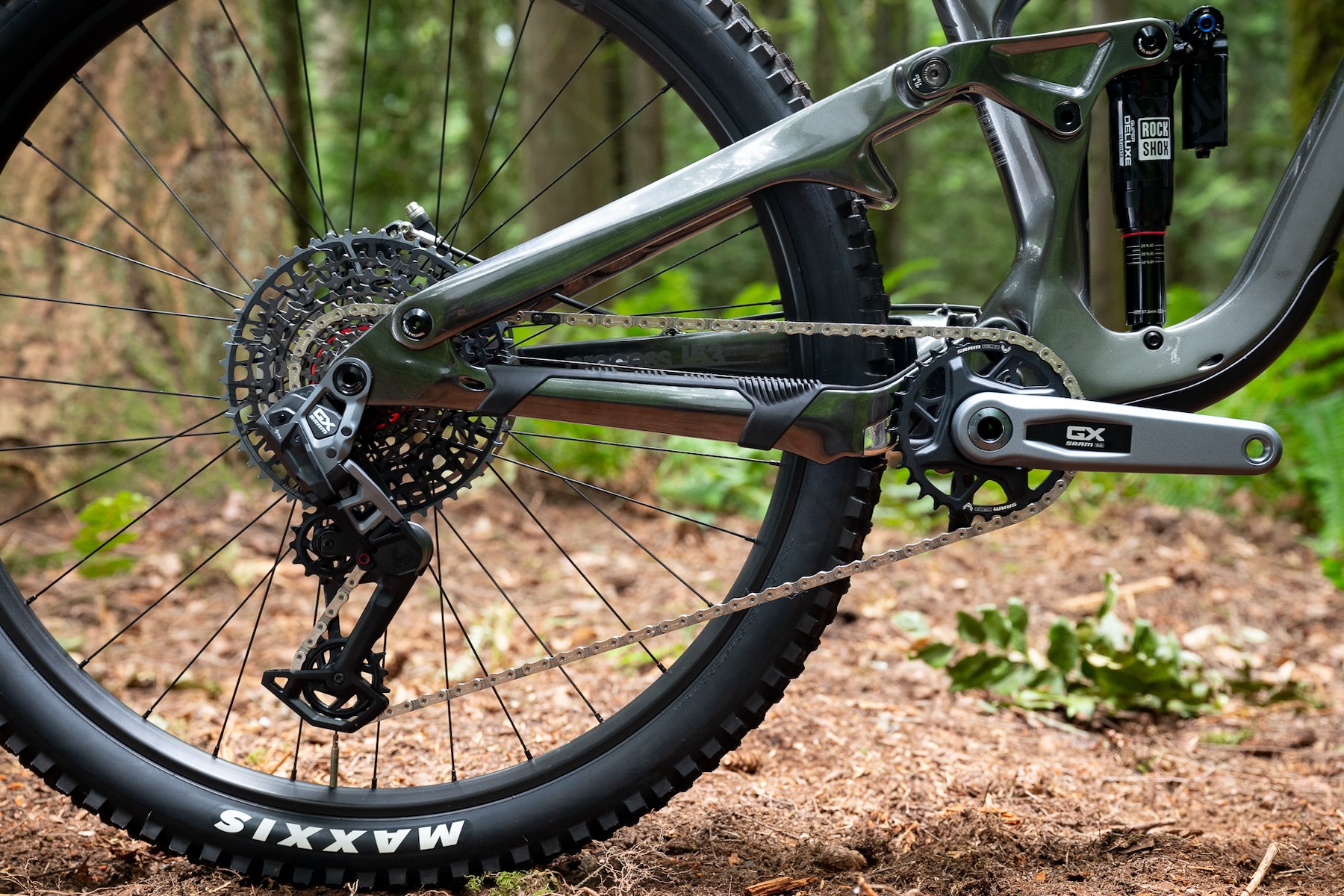
All frames max out with a 200 mm rear rotor, though it’s interesting that the carbon CR models get that full 200 mm size while the aluminum options get a 180 mm rear rotor. The brake selection is perhaps the biggest disappointment of the spec sheet, with all but the base model getting SRAM’s relatively underpowered G2 brakes — a bike with the intentions of the 153 deserves Codes at the very least. Oddly, the base model Process 153 gets SRAM DB8s, which still aren’t quite up to Code-level power in our experience but may exceed that of the G2.
Highlights from each model’s available builds are as follows:
- Drivetrain: Microshift Advent X 10 speed
- Brakes: SRAM DB8 (200 mm front / 180 mm rear rotors)
- Fork: RockShox Yari RC (160 mm)
- Shock: RockShox Deluxe Select+
- Wheels: WTB ST i30 rims / Formula hubs
- Dropper Post: TranzX +RAD
- Drivetrain: SRAM GX / NX Eagle
- Brakes: SRAM G2 RS (200 mm front / 180 mm rear rotors)
- Fork: RockShox Lyrik Select (160 mm)
- Shock: RockShox Super Deluxe Select+
- Wheels: WTB KOM Trail i30 rims / Formula hubs
- Dropper Post: TranzX +RAD
- Drivetrain: SRAM GX Eagle
- Brakes: SRAM G2 R (200 mm rotors)
- Fork: Fox 36 Performance (160 mm)
- Shock: Fox Float X Performance Elite
- Wheels: WTB KOM Trail i30 rims / DT Swiss 370 hubs
- Dropper Post: TranzX +RAD
- Drivetrain: SRAM GX Transmission
- Brakes: SRAM G2 RSC (200 mm rotors)
- Fork: RockShox Lyrik Ultimate RC2 (160 mm)
- Shock: RockShox Super Deluxe Ultimate
- Wheels: WTB KOM Trail i30 rims / DT Swiss 350 hubs
- Dropper Post: RockShox Reverb
Process 134
The Process 134 gets nearly all of the same spec choices at each of its four build levels , aside from some scaled-back suspension components. Rather than RockShox Lyrik / Yari and Fox 36 forks, the Process 134 gets RockShox Pike / Recon and Fox 34 models, reflecting its Trail-oriented intentions. Shock choices are the same as the Process 153 in both CR models, but the aluminum versions both get versions of the RockShox Deluxe.
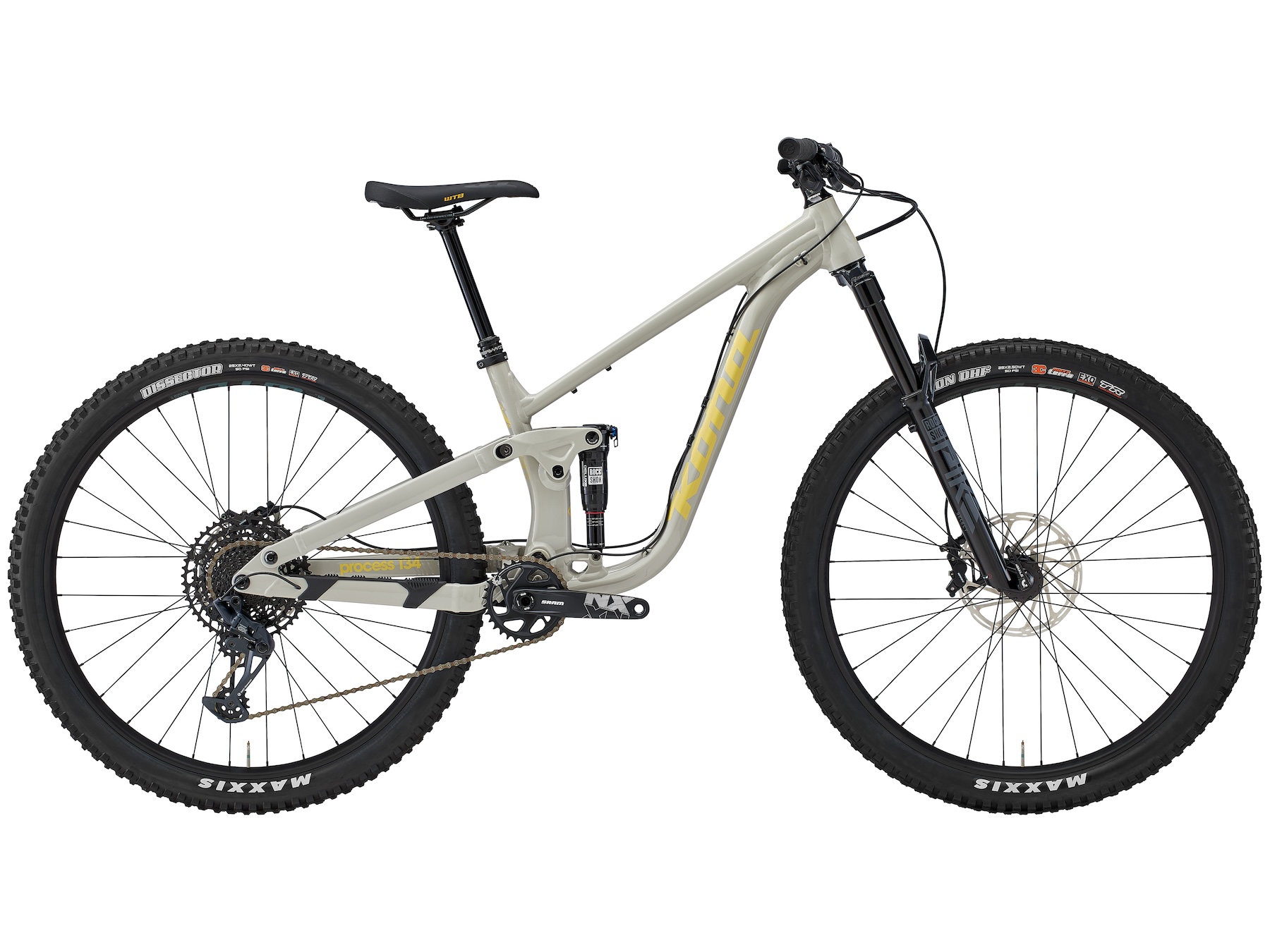
The SRAM G2 brakes on all but the base model of the Process 134 feel a bit more fit-for-purpose on the 134 versus the bigger Process 153, though Codes still wouldn’t be out of place. The big 200 mm front rotors on all but the base model are also a welcome sight, as is the same very long dropper post selection with Large and XL sizes getting 200 mm and Small and Medium getting 175 mm.
Highlights from each model’s available builds are as follows:
- Drivetrain: Microshift Advent X 10 speed
- Brakes: SRAM Level (180 mm rotors)
- Fork: RockShox Recon RL (140 mm)
- Shock: RockShox Deluxe Select+
- Wheels: WTB ST i30 rims / Formula hubs
- Dropper Post: TranzX +RAD
- Drivetrain: SRAM GX / NX Eagle
- Brakes: SRAM G2 RS (200 mm front / 180 mm rear rotors)
- Fork: RockShox Pike Select RC (140 mm)
- Shock: RockShox Deluxe Ultimate
- Wheels: WTB KOM Team i30 rims / Formula hubs
- Dropper Post: TranzX +RAD
- Drivetrain: SRAM GX Eagle
- Brakes: SRAM G2 R (200 mm rotors)
- Fork: Fox 34 Performance (140 mm)
- Shock: Fox Float X Performance Elite
- Wheels: WTB KOM Team i30 rims / DT Swiss 370 hubs
- Dropper Post: TranzX +RAD
- Drivetrain: SRAM GX Transmission
- Brakes: SRAM G2 RSC (200 mm rotors)
- Fork: RockShox Pike Ultimate RC2 (140 mm)
- Shock: RockShox Super Deluxe Ultimate
- Wheels: WTB KOM Team i30 rims / DT Swiss 350 hubs
- Dropper Post: RockShox Reverb
Some Questions / Things We’re Curious About
(1) The Process 153 and 134 share a whole lot of frame details, suspension traits, geometry figures, and spec choices. Given that, do they feel like overgrown (or shrunken, respectively) versions of one another, or are they more different than a spec sheet would imply?
(2) The prior Process 153 and 134 both struck a happy chord with folks who prioritized more versatile handling traits rather than boundary-pushing geometry figures. Do the current Process 153 and 134 still have that same uniquely versatile appeal?
Bottom Line (For Now)
Kona’s Process lineup has earned some loyal followers for its versatility, and fans of that philosophy should be pleased with the refined Process 153 and 134. Both the Process 153 and 134 could be described as modernized rather than reinvented, with clear differences in suspension travel but surprising similarities elsewhere. Though the spec sheets aren’t going to get bike tech nerds drooling, both models also present a fairly compelling value picture too. It’s great to see a new bike release from Kona coming out of their rocky first half of the year, and we hope we can get a chance to get some saddle time on their new Process lineup before too long.

There’s something feel-good about Kona going back to original ownership and I hope they play the retro card hard.
Anyone for a Stink-E?
Me podrían decir de que año es la.kona 153 dl y de que material esta echo el.cuadro.!?
Gracias.
Que es un stink e ?